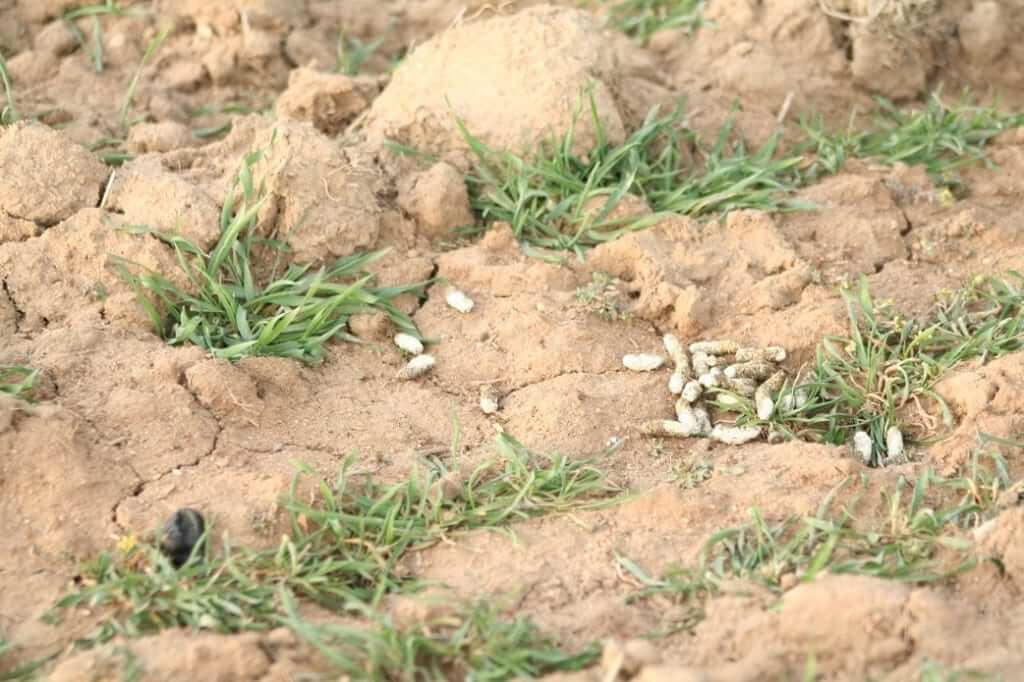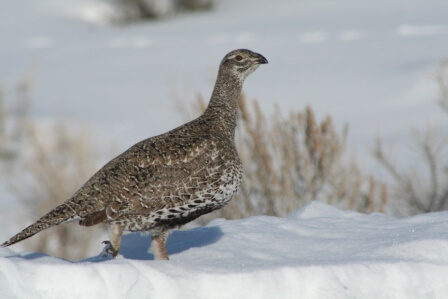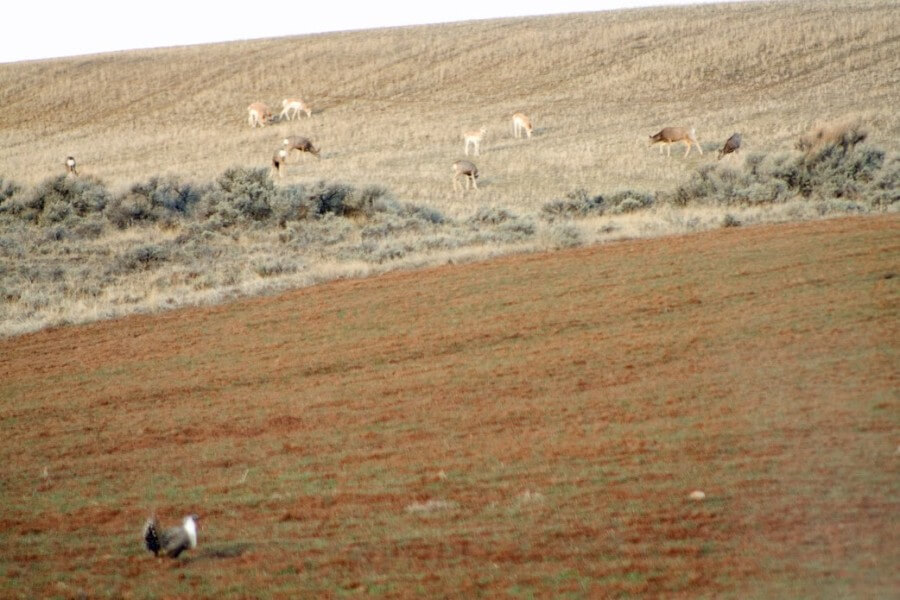Written by Sasha Nelson
Our fifth and final year of Greater sage grouse lek tours is underway and we wanted to share some of the reasons this species is worth protecting.
-
 Grouse have been called “sage chicken.” Historically, these relatively large birds provided an important protein source to people of the Western United States. They were once so prolific that explorers described how flocks would “darken the skies” and many a settler made it through hard times subsisting on the bird. Last year Colorado had a two-day hunting season to allow people to experience the traditional custom of harvesting grouse for a food source.
Grouse have been called “sage chicken.” Historically, these relatively large birds provided an important protein source to people of the Western United States. They were once so prolific that explorers described how flocks would “darken the skies” and many a settler made it through hard times subsisting on the bird. Last year Colorado had a two-day hunting season to allow people to experience the traditional custom of harvesting grouse for a food source.  Grouse have four types of scat or poop called castings: the tar like secretions of sage oil, the pellets from a mix of sage and forbes, the runny droppings from forbes and insects and the large “clockers” produced from hens who leave the nest only once or twice a day when sitting on the nest.
Grouse have four types of scat or poop called castings: the tar like secretions of sage oil, the pellets from a mix of sage and forbes, the runny droppings from forbes and insects and the large “clockers” produced from hens who leave the nest only once or twice a day when sitting on the nest. Mating season is early to mid-March until mid to late May. Females lay between 8-12 eggs and are responsible for creating the nest and brood rearing. Greater sage grouse do not pair-bond, they are not monogamous. Outside of mating, males do not take part in raising the young. Eggs and nests can be lost due to disturbances such as bad weather and predators such as ravens, red fox, raccoon and coyote.
Mating season is early to mid-March until mid to late May. Females lay between 8-12 eggs and are responsible for creating the nest and brood rearing. Greater sage grouse do not pair-bond, they are not monogamous. Outside of mating, males do not take part in raising the young. Eggs and nests can be lost due to disturbances such as bad weather and predators such as ravens, red fox, raccoon and coyote. Mating occurs on a landscape known as a “lek.” Leks are ancestral spots visited each year where the males dance to attract mates. Lek is a Nordik word that loosely translates to mean dance hall or dance floor. All leks have limited vegetation and afford 360 degree view for the birds to watch for Eagles – the predator most likely to kill a mature leking bird. Leks are surrounded by sage in succession (baby sage to granddaddy sage all play a role in the life cycle). Birds may travel from over 3-6 miles away to get to this lek. At this time attempts to relocate birds from one lek to another have failed. Leks that are disturbed and abandoned do not usually result in birds using a nearby lek. We do not yet understand why. Protecting leks and the 3-6 miles surrounding these breeding grounds is a priority to enable conservation of the bird. The lek we are viewing is one of the most populated by Greater sage grouse in the State of Colorado. It is a field that has been cultivated since 1912, but grouse danced long before it was a cultivated field.
Mating occurs on a landscape known as a “lek.” Leks are ancestral spots visited each year where the males dance to attract mates. Lek is a Nordik word that loosely translates to mean dance hall or dance floor. All leks have limited vegetation and afford 360 degree view for the birds to watch for Eagles – the predator most likely to kill a mature leking bird. Leks are surrounded by sage in succession (baby sage to granddaddy sage all play a role in the life cycle). Birds may travel from over 3-6 miles away to get to this lek. At this time attempts to relocate birds from one lek to another have failed. Leks that are disturbed and abandoned do not usually result in birds using a nearby lek. We do not yet understand why. Protecting leks and the 3-6 miles surrounding these breeding grounds is a priority to enable conservation of the bird. The lek we are viewing is one of the most populated by Greater sage grouse in the State of Colorado. It is a field that has been cultivated since 1912, but grouse danced long before it was a cultivated field.- Northwest Colorado is home to two thirds of all Greater sage grouse in Colorado. The greatest threat to Colorado grouse is habitat fragmentation from human causes such as urban expansion, oil and gas development and transmission lines.
Grouse are a bird worth saving if not for themselves then for the sake of the 350 other species and the countless communities living on our great sagebrush steppe. They need our public lands to stay public for best management. So please show your support by taking action now.



